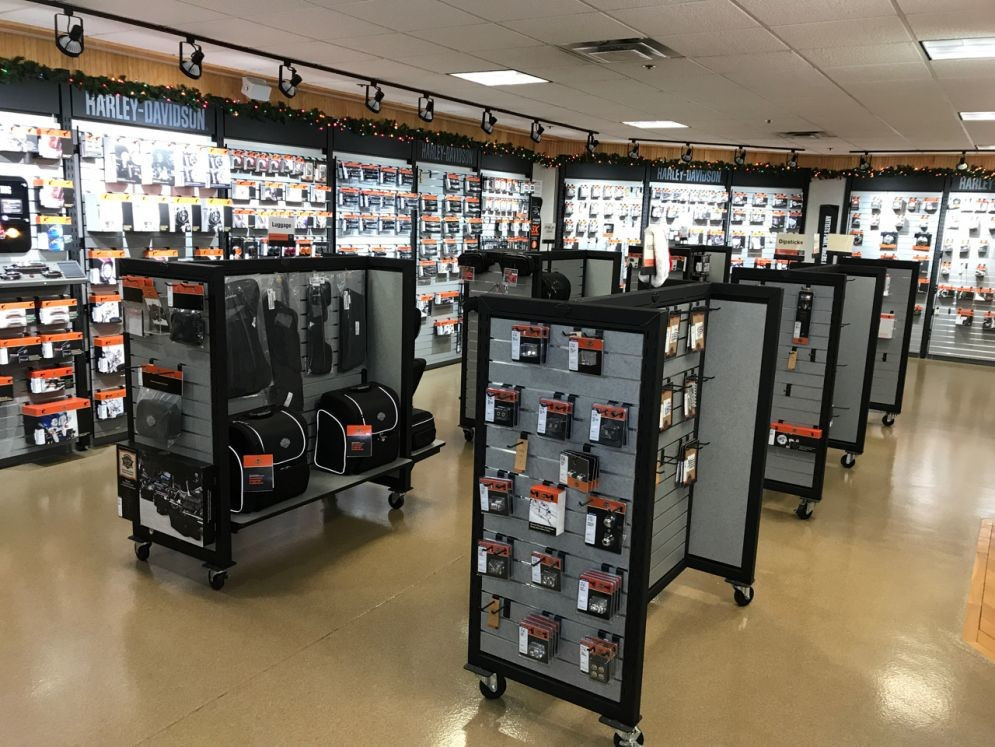Discover Competitive Prices on Motocross Parts NZ for Every Bike
Discover Competitive Prices on Motocross Parts NZ for Every Bike
Blog Article
Comprehending the Vital Parts of a Motorbike: A Comprehensive Overview for Enthusiasts
For motorcycle fanatics looking to raise their riding experience and guarantee their bikes run smoothly, recognizing the crucial parts of a motorbike is paramount. Each component, from the engine's complex workings to the critical duty of the stopping systems, not only impacts efficiency however additionally safety and comfort.
Engine Parts

The camshaft plays a crucial role in managing the timing of the engine's valves, guaranteeing the accurate opening and closing required for efficient fuel and air intake, along with exhaust expulsion. This timing is vital to maintaining ideal engine performance and efficiency. Additionally, the carburetor or gas shot system, relying on the motorcycle model, is accountable for blending air with gas in the appropriate ratio for combustion.
The air conditioning system, either air or liquid-based, functions to keep the engine's temperature within operational limits, protecting against getting too hot and making sure long life - motox parts nz. Each component, carefully created and incorporated, adds to the smooth procedure of the engine, specifying the bike's power outcome and general efficiency
Transmission System
Integral to the motorbike's performance, the transmission system ensures effective power transfer from the engine to the wheels. This system consists of numerous critical components, including the clutch, transmission, and final drive, each playing a vital duty in equating the engine's power into movement. The clutch, commonly operated by a hand bar, serves to disengage the engine and involve from the transmission, enabling for smooth gear modifications and regulated velocity.
The transmission, commonly referred to as the transmission appropriate, consists of a set of gears that riders can by hand shift via to readjust the bike's speed and torque result. These equipments are set up in a sequence that enables the bike to accelerate smoothly and maintain ideal engine performance across numerous rates. The majority of motorcycles use a sequential transmission, needing the motorcyclist to move gears in a fixed order.
Braking Mechanisms
While recognizing the transmission system is key to using a bike's power, similarly crucial is the ability to manage and quit that power successfully, which is where stopping devices enter into play. Brakes are critical for security and efficiency, giving the motorcyclist with the necessary control to browse numerous terrains and conditions. Usually, bikes include two kinds of braking systems: disc brakes and drum brakes.
Disc brakes are more prevalent in contemporary bikes as a result of their superior efficiency. They contain a brake disc, caliper, and pads. When turned on, the caliper presses the brake pads versus the spinning disc, transforming kinetic power right into warm, consequently slowing down the wheel. This system uses better warm dissipation, regular performance, and improved stopping power, particularly in wet problems.
Conversely, drum brakes, though less usual, are still located in some motorcycles. They work by pressing brake shoes against the internal surface area of a drum affixed to the wheel. While typically less reliable in warm dissipation and stopping power, drum brakes are less complex and extra cost-effective.
Comprehending these stopping systems' nuances allows cyclists to maintain their motorcycles appropriately and appreciate the engineering that guarantees secure and effective quiting.
Suspension and Guiding
Suspension and guiding systems are important parts that considerably influence a motorcycle's handling and adventure convenience. The suspension system, containing forks at the front and shock absorbers at the rear, takes in roadway irregularities, boosting stability and control. Front forks, inverted or normally telescopic, compress and rebound to reduce impacts, while back shock absorbers keep tire call with the road, critical for traction and safety.
Steering, centered around the handlebars, links the rider to the bike's directional control. The steering head bearings make certain smooth procedure, enabling exact ability to move. Appropriate positioning and maintenance of these bearings are critical for foreseeable guiding reaction and decreasing motorcyclist tiredness.
The suspension's adjustability is another important element; preload, damping, and rebound settings permit modification to suit various riding problems and styles. This flexibility is essential for optimizing efficiency, whether navigating metropolitan streets or dealing with tough routes. Developments like electronic suspension systems supply real-time adjustments, boosting ride high quality across diverse terrains.

Electrical Systems
After guaranteeing a smooth and regulated trip with reliable suspension and steering systems, interest turns to the electrical systems, a click reference pivotal element of modern bikes. These systems play an important duty not just in beginning the engine but likewise in powering different components that boost the functionality and security of the bike.
At the heart of a bike's electric system is the battery, which stores electrical energy necessary for beginning the engine and powering auxiliary systems - mx gear nz. The alternator or generator, combined with the rectifier-regulator, makes certain the battery stays charged while the bike functions, transforming mechanical energy right into electrical power and preserving voltage degrees
The ignition system, another essential part, is accountable for sparking the air-fuel combination in the engine's cyndrical tubes. Modern motorcycles typically make use of a digital ignition system, using better efficiency and integrity contrasted to traditional systems.
Lighting systems, consisting of fronts lights, tail lights, and signs, are also crucial, making sure visibility and safety for the biker. Added digital parts such check my source as sensing units, control units, and presents add to advanced functions like fuel injection management, anti-lock braking systems (ABS), and electronic control panels, additionally improving the riding experience.
Verdict
A complete comprehension of a motorbike's vital components, consisting of the engine, transmission system, braking mechanisms, suspension, steering, and electric systems, is crucial for fanatics aiming to enhance safety, comfort, and efficiency. Mastery of these components enables educated choices relating to maintenance and upgrades, inevitably improving the riding experience. By integrating this expertise, cyclists can visit ensure their motorbikes run at peak performance and reliability, thereby making best use of both enjoyment and longevity of their vehicles.
For motorbike enthusiasts looking to boost their riding experience and guarantee their bikes run smoothly, understanding the necessary parts of a motorcycle is critical.Integral to the motorcycle's functionality, the transmission system ensures reliable power transfer from the engine to the wheels.While recognizing the transmission system is vital to using a motorbike's power, similarly important is the capability to regulate and stop that power successfully, which is where braking mechanisms come into play. Generally, bikes feature 2 types of braking systems: disc brakes and drum brakes.
A detailed understanding of a bike's important parts, including the engine, transmission system, braking mechanisms, suspension, steering, and electric systems, is important for enthusiasts intending to maximize performance, security, and convenience.
Report this page